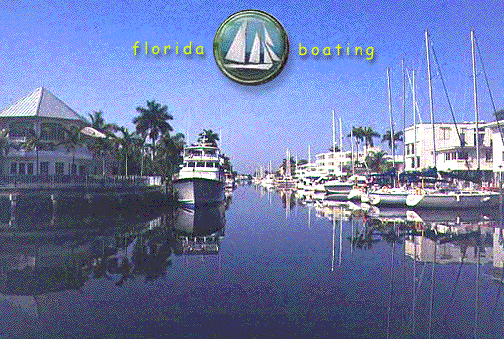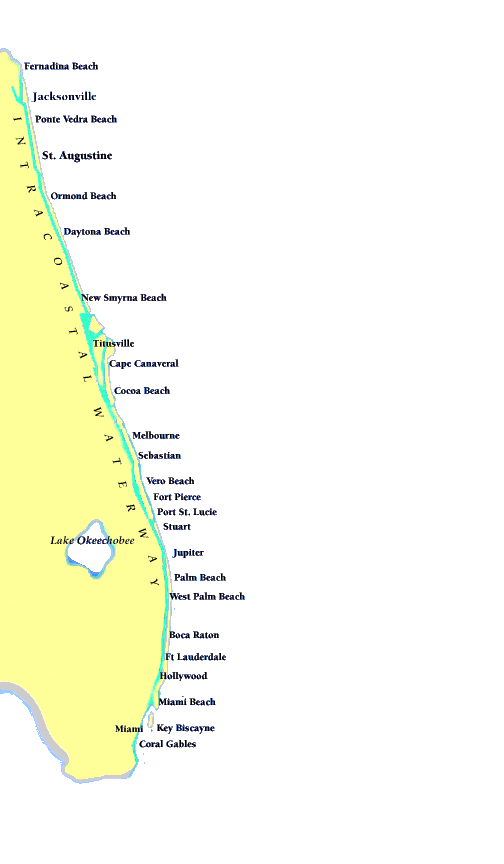
|
The St. Augustine Municipal Marina is at Mile 778.3 and itís an ideal base for exploring this charming city. The restored part of the downtown area and the Castillo de San Marcos are among the many highlights.
The cruise down to Daytona Beach is typically quiet and interesting with many smaller facilities and attractions. Once in Daytona Beach proper (around Mile 830), there are several marinas to serve as bases directly in the downtown area. Once a spring fling for rowdy college students, Daytona Beach has become a year-round resort haven for families, boaters, and many others.
To the south, New Smyrna Beach (around Mile 845) marks the beginning of central Florida proper. Basically, for ICW cruisers, this means the generally wide and enjoyable Indian River. At the upper end, the Indian River is about four miles across, narrowing to about 1 1/2 miles in width at the end of its 120-mile length.
This section includes the only unattended opening bridge on the entire ICW (Mile 876.7), which closes automatically when a train approaches (eight minute warning to approaching boats). Boaters will also get glimpses of the towering vehicle-assembly building (and maybe a rocket or two) at the John F. Kennedy Space Center. All along the way, boaters will also see the famed citrus groves that have made Indian River fruit world-famous
.
Several cities, including Titusville, Cocoa, Melbourne, Vero Beach, Fort Pierce, Port St. Lucie, and Jupiter, also dot the Indian River area. All make for great stops in this interesting part of Florida.
The Palm Beaches mark the start of southern Florida. From the water, boaters will enjoy view of huge homes, private docks, some serious yachts, and a large number of marinas with every service imaginable
.
Down here, one town or city essentially flows into the next, making boating traffic a frequent issue. Restricted bridges and frequently slow cruising speeds make this an area for patience at the helm.
Highlights of southern Florida boating on the ICW include the elegance of the Palm Beaches and Boca Raton, the vibrancy of Fort Lauderdale, and everything that has made Miami and Miami Beach a neon-hot destination for boaters and other visitors. The large condominium buildings will often make cruising feel more like walking in Manhattan, but itís an experience few boaters will ever forget.
Near the end of the ICW the Miami River runs right through the middle of downtown Miami. The departure point for Key Biscayne (Mile 1095) essentially marks the end of this phenomenal east coast boating adventure.
|



